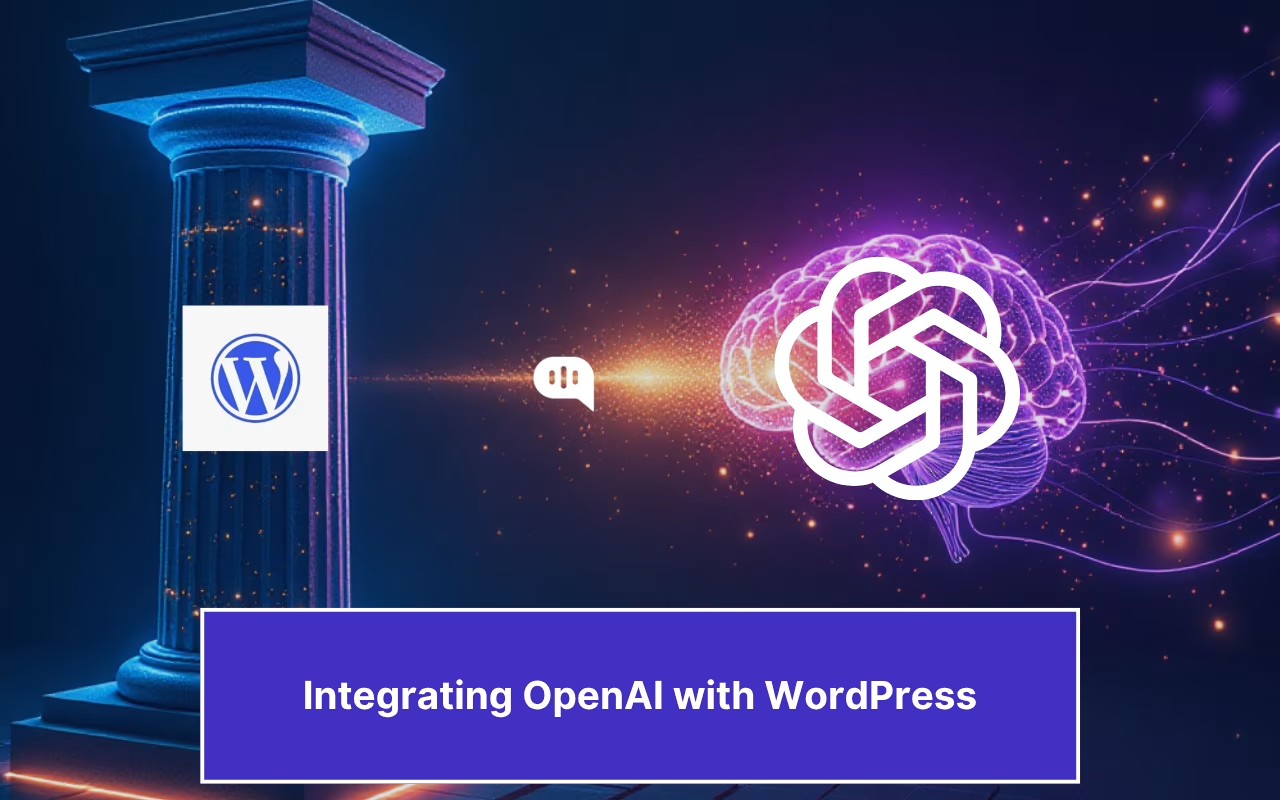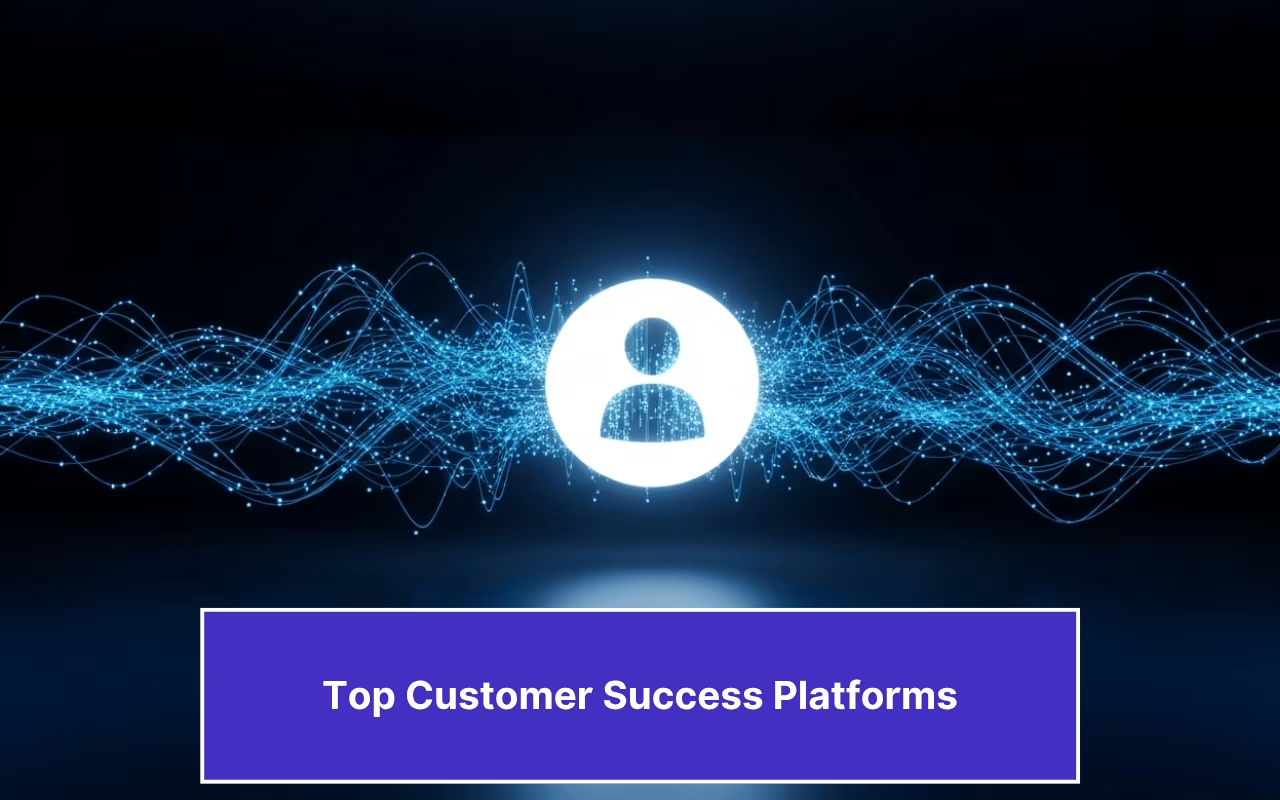Updated on January 21, 2025
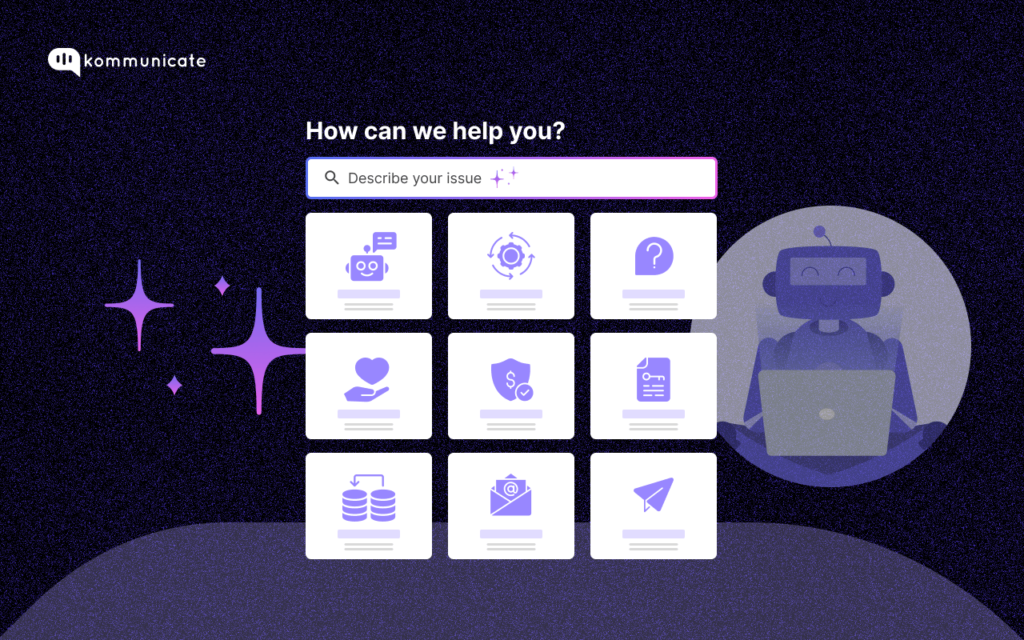
In the year 2025, most of the customers want to find answers to their queries by themselves.
This is not a blanket statement but is backed by a Hubspot survey, which found that 73% of all customers want to solve issues independently.
But does that mean you leave your customers high and dry, to go picking around in your obscure documentation for a pressing issue? Nope, that may push them away from your brand, and your customers will perceive you as a business that only cares about its margins.
So what’s the solution? Do you hire support agents to handle an ever-increasing number of customer queries? Nope. The margins, remember? Do you create a detailed FAQ page that may answer any query that your customer will have? Close, but not the right answer.
The right answer is a help center, which today is more important than ever before.
In this blog post, we are going to read about:
- What is a help center?
- Fundamental elements of a help center.
- How AI is transforming help center in 2025
- Examples of excellent help centers
Let us begin with a simple definition.
What is a help center?
A help center is a website or a dedicated section intended to help your customers find answers to their questions. This section covers the most common and basic information relevant to your business.
A good example could be; how I can change my password, how kommunicate works, etc. Typically, a help center includes knowledge base with FAQs, articles and tutorials, in addition to communities where customers can share information with each other, as well as various communication channels such as email, chat and social media integration.
Don’t confuse a help desk with a help center. A help desk merely captures customer issues and complaints and gives them to support agents who will reach out to solve the customers problems. Contrary to this, a help center provides bite sized articles or guides that answer a specific question or solve a particular issue.
So what are some typical elements of a help center. Let’s explore in this next section.
Fundamental elements of a help center
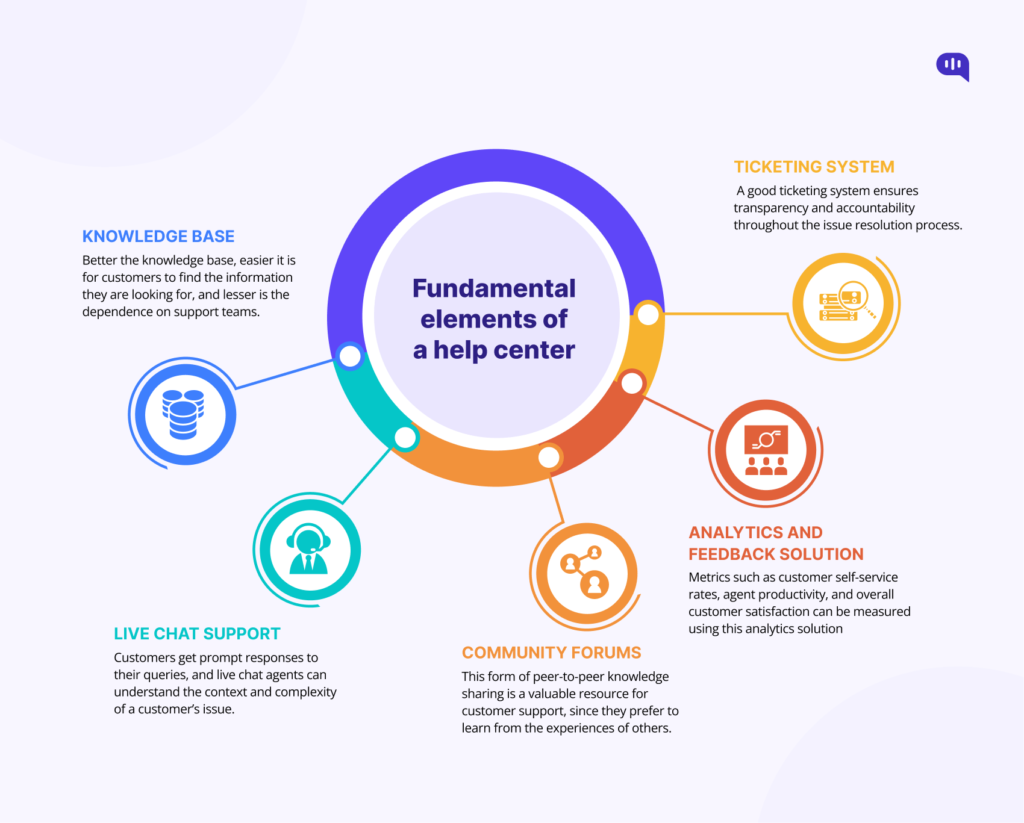
Here are the fundamental elements of a help center, listed in no particular order.
1. Knowledge base
A knowledge base is the most basic element of a help center, giving customers access to libraries, tutorials and resources. A good knowledge base will cover a wide array of topics, from product features and functionality to best practices and troubleshooting guides. Better the knowledge base, easier it is for customers to find the information they are looking for, and lesser is the dependence on support teams.
2. Ticketing system
With any business that is doing well, there are bound to be a huge volume of customer support requests, in the form of tickets. A ticketing system is an integral part of a help center, where it captures the customer inquiries, assigns them to appropriate agents, and manages resolttion workflow. A good ticketing system ensures transparency and accountability throughout the issue resolution process.

3. Live chat support
Many a times, customers expect real time assistance from companies, and it is here that live chat support proves to be an irreplaceable element of a help center. Customers get prompt responses to their queries, and live chat agents can understand the context and complexity of a customer’s issue. They can route complex queries to subject matter experts, making sure that the customers get the most accurate answer.
4. Community forums
Within the help center, a community forum serves as a centralized location where customers can connect with each other, and collaborate on solutions. This form of peer-to-peer knowledge sharing is a valuable resource for customer support, since they prefer to learn from the experiences of others. The company’s own product team can also learn a lot from the community forums, which can lead to an advanced product.
5. Analytics and feedback solution
Any good help center should have a good reporting and analytics solution that will help the organization track their KPIs and make data driven decisions. Metrics such as customer self-service rates, agent productivity, and overall customer satisfaction can be measured using this analytics solution. Analyzing this data allows companies to continuously optimize the help center, iterate and improve.
So these are a few fundamental elements of a help center. Let us now look at how AI is revolutionizing this space in 2025.
How is AI revolutionizing the help center in 2025
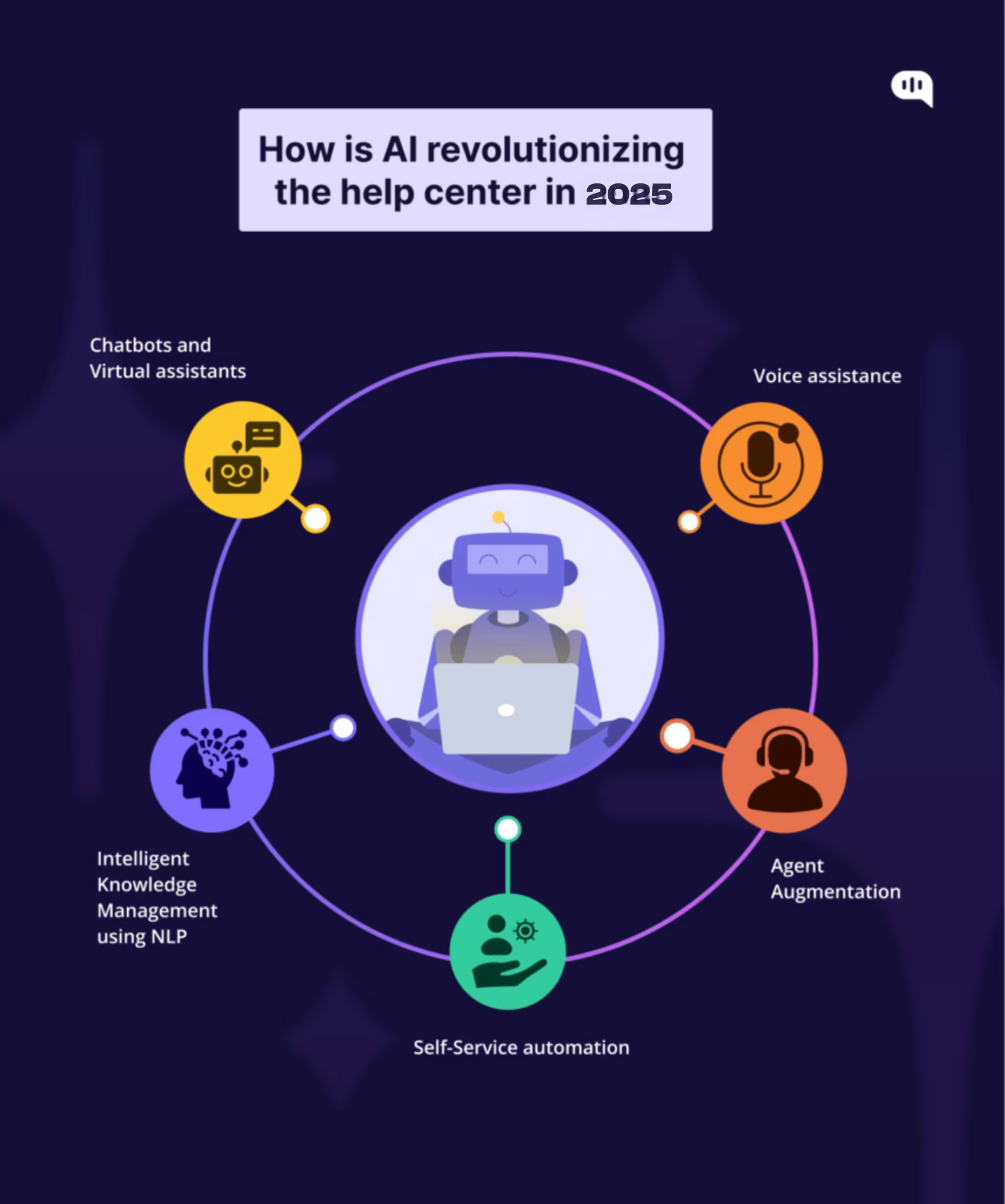
The AI revolution has not spared any sphere in the modern business landscape, and help centers are no different. Some of the ways AI is directly impacting help centers include:
1. Chatbots and Virtual assistants
Chatbots were a fad even before OpenAI introduced ChatGPT and began the modern AI race, but with generative AI, the language comprehension capabilities and responses that these chatbots give has climbed a whole new level. These intelligent agents can now handle complex inquiries, give personalized recommendations, and also do a human handoff when the inquiry requires a human oversight. Support agents can thus focus on more complex tasks and leave the resolution of simple and repetitive queries to these intelligent AI chatbots. We envision a future where a chatbot will be able to handle most of the incoming queries, irrespective of the complexity, thanks to AI.
2. Intelligent Knowledge Management using NLP
Knowledge bases are in for a total revamp, as AI transforms the way they are accessed, structured and organized. Using sophisticated NLP techniques, AI systems today can systematically categorize and tag content, meaning they are more easily discoverable by customers and agents alike. Another application of AI is personalization, where they can provide highly personalized answers to customer queries. AI-powered assistants also offer human-like interaction, which is bound to improve customer satisfaction and reduce the workload on human agents.
3. Self-Service automation
AI-driven knowledge management systems can dynamically generate and recommend relevant self-service content, ensuring customers have access to the most up-to-date information. This intelligent content curation reduces the need for human intervention, thereby streamlining the self-service experience. Using AI’s predictive abilities, companies can analyze customer data and interaction patterns, proactively giving solutions to problems even before they arise. Self-service automation will continue to evolve with AI, and companies can use this technology to drive down operational costs and improve efficiency.

4. Agent Augmentation
Human agents are being increasingly augmented with AI-driven capabilities, and now, help centers can improve agent productivity and overall customer satisfaction. During a live customer interaction, AI can analyze the conversation context and the customer’s purchase history to guide them to a relevant knowledge base article, or give troubleshooting steps. An advanced AI system can also do sentiment analysis, alerting the agent when a customer is getting angry or frustrated. This allows the agents to respond accordingly, diffusing tense situations and ensuring that there is no bad customer experience.
5. Voice assistance
A future where a customer simply speaks their query or issue, and an AI-driven voice assistant understands the context and provides accurate responses, is not science fiction anymore, thanks to advancements in voice technology. As an example, a customer in the retail sector can use voice assistants to inquire if a product is available, place the order, and seek personalized recommendations. Accessibility and convenience is enhanced, as help centers can cater to a wider range of customers.
Now that we have seen how Generative AI is reshaping the way help centers are going to function in the future, let us take a look at some of the companies that are actually trailblazing this amazing technology.
Examples of excellent help centers
1. Zendesk
The masters of the Customer Relationship Management (CRM) software, Zendesk is known for its extensive documentation and excellent self-service capabilities.
Zendesk help center comes with a search bar that lets you ask it a bevy of questions, and there are also separate sections on getting started, videos, community and best practices, among others.
2. Hubspot
Hubspot is a name familiar with most of the marketers and sales professionals in the tech world, as pioneers connecting marketing, sales and customer service using an AI-powered platform. Hubspot’s help center is a reflection of all that Hubspot does, being ever helpful and freely sharing knowledge.
There is a community section, knowledge base, access to Hubspot Academy, and also developer documentation all clubbed into one helpful page. The website also offers a chatbot that you can ask your questions to, which generally points you in the right direction.

3. Salesforce
Salesforce is a name to be reckoned with in the cloud computing space, and are pioneers of helping track customer interactions and sales data. By design, Salesforce operates to improve efficiency and this reflects in its help center as well.
Salesforce has categorized its help center based on the different kinds of products they offer, and as usual, there is a simple search bar at the top that lets you find information easily. The help center page also serves as the contact center for other Salesforce products such as
Heroku, Mulesoft and Slack.
4. Google Workspace
Can you ask the mother of all Search engines help to use its own products? Turns out you can, and turns out Google has put in a lot of effort to make sure customers find their help center as helpful as the search engine.
Google has categorized the help center according to all its products such as Gmail, Google Play, and Youtube, and there are topics and subtopics branching off from this main help center. Most of the questions that a customer has with Google’s offerings can be found here, and, if not found, Google even gives you an option to send feedback about the help center.
5. Kommunicate
We are closing off this list with a help center we know for a fact covers everything you need to know about chatbot development, our very own Kommunicate help center.
Start Crafting Your Chatbot Experience Without Sign upKommunicate’s help center let’s you search all the documentation so that you can find exactly what you are looking for, or, if you have a specific query, lets you explore sub categories like chatbots, integrations and payments.
We hope by the end of this article you know how important help centers are and how AI is poised to revolutionize them in 2025 and beyond. If you want to learn more, we have written extensively about building a help center from scratch, which you can read here. Companies can leverage AI to build a help center for their brands that will lead to happier customers, and eventually, more business.

CEO & Co-Founder of Kommunicate, with 15+ years of experience in building exceptional AI and chat-based products. Believes the future is human + bot working together and complementing each other.



